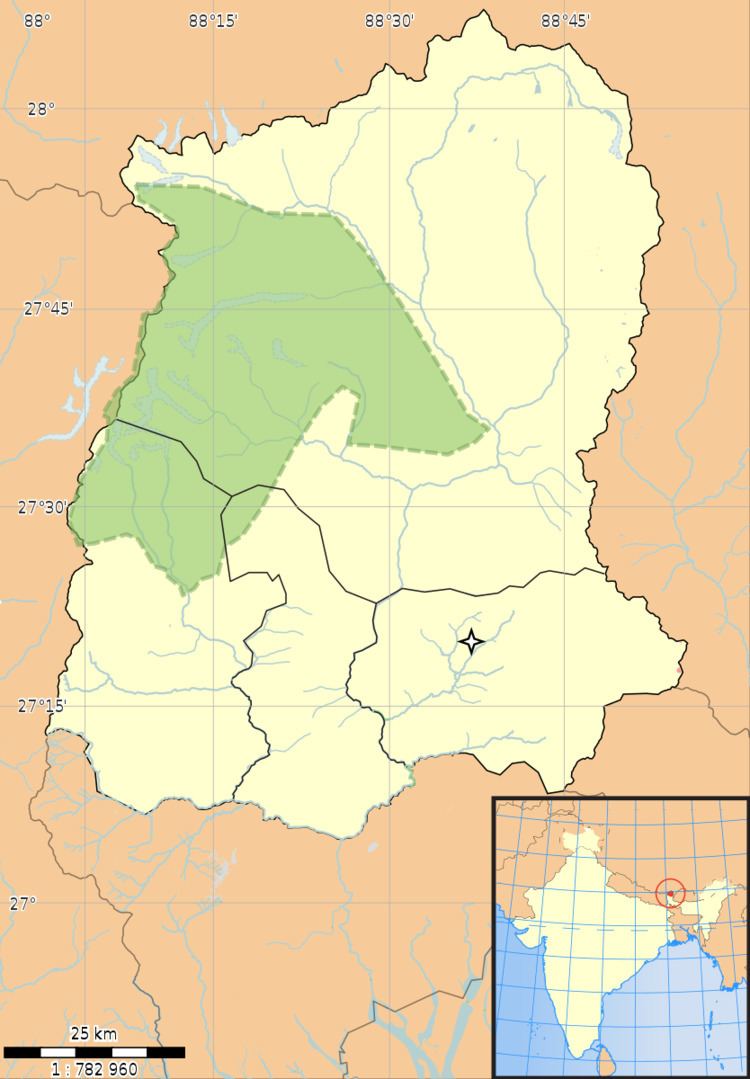Established 1999 | Area 124 km² | |
 | ||
Address 27°20'00. 88°46'00.0"E, Lingaraj Nagar, Aurobinda Nagar, Brahmapur, Odisha 760001 | ||
Pangolakha wildlife sanctuary tour
Pangolakha Wildlife Sanctuary (Pron: pǽngólɑ́kha, Nepali: पाङ्लखा) is a wildlife reserve in the East Sikkim district of the state of Sikkim in India. It is about 30 kilometres (19 mi) east of Rangpo and about 45 kilometres (28 mi) by road from Rangpo city. The total notified area of the park is around 124 square kilometres (48 sq mi) while inside the wildlife sanctuary there are a few hamlets: Aritar, Lingtam, Phadamchen, Zuluk, Gnathang valley and Kupup. This wildlife sanctuary is linked to the forests of Bhutan and Neora Valley National Park of West Bengal. The area that comes under this biosphere has been declared in the year of 1999 as an wildlife sanctuary under biogeographic province category 2C.
Contents
Geography
Altitudinal range of the sanctuary lies between 1760 metres to 4390 meters. Pangolakha range in the east separates Sikkim from its eastern neighboring country Bhutan. Whereas it is linked through forest patches with to the south by Neora Valley National Park of West Bengal. Some high altitude lakes are present there, which acts as a biodiversity hotspot for migratory birds, like Tsongmo. Rivers and riverine tributaries from north are frozen from December to March; whereas all these riverine tributaries and rivers flow with enormous volume of water during Rainy season(i.e. from Mid April to Mid October).
Biodiversity
This wildlife sanctuary supports a large variety of animals, since it falls at the junction of Palearctic ecozone and Indomalaya ecozone. As a Biogeographic Province, this wildlife sanctuary comes under 2C category.
Biomes
Inside this wildlife sanctuary, the primary biomes corresponding to the ecozone are:
All of these are typical of the Bhutan - Nepal - India hilly region.
Fauna
Birds at Pangolakha Wildlife Sanctuary include kalij pheasant, Oriental honey buzzard, blood pheasant, white-crested laughingthrush, striated laughingthrush, chestnut-crowned laughingthrush, bar-throated minla, red-tailed minla, white-browed shrike babbler, white-browed fulvetta, rufous sibia, whiskered yuhina, stripe-throated yuhina, rufous-vented yuhina, brown dipper, rusty-flanked treecreeper, dark-rumped rosefinch, little bunting, etc. It is also home for some rarities like the speckled wood pigeon and bay woodpecker.
Mammals some of the exotic species from North-East India are present in this wildlife sanctuary. The red panda, the state mammal of Sikkim and one of the most elusive creature from northern forests lives here. Asiatic black bear, yellow-throated marten, takin and red fox are also present in this wildlife sanctuary. Some very commonly seen mammals in this sanctuary are the Himalayan striped squirrel and hoary bellied squirrel of Callosciurus genus.
The State Forest Department has set up Eco-Development Committees (EDCs) around all wildlife protected areas. In this IBA an EDC has been set up in the villages of Mankhim, Dalepchand, Lingtam, Phadamchen, Zuluk and Gnathang.
